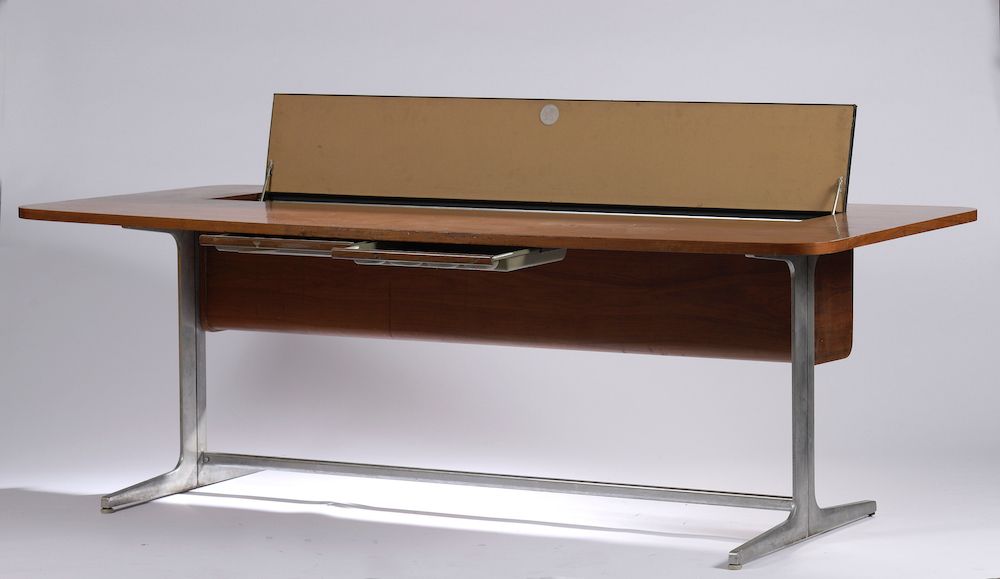Description
George NELSON (1908-1986), published by HERMAN MILLER. Large desk model "Action Office", the top in walnut veneer opening to two drawers with grey abs in the belt, centered by a box with files covered with black skai and resting on a cast aluminium base (missing screws and a glide, small scratches and crack in the abs). Model created in 1964. Height : 70 cm 70 cm - Length : 212 cm - Depth : 107 cm
199
George NELSON (1908-1986), published by HERMAN MILLER. Large desk model "Action Office", the top in walnut veneer opening to two drawers with grey abs in the belt, centered by a box with files covered with black skai and resting on a cast aluminium base (missing screws and a glide, small scratches and crack in the abs). Model created in 1964. Height : 70 cm 70 cm - Length : 212 cm - Depth : 107 cm
You may also like
